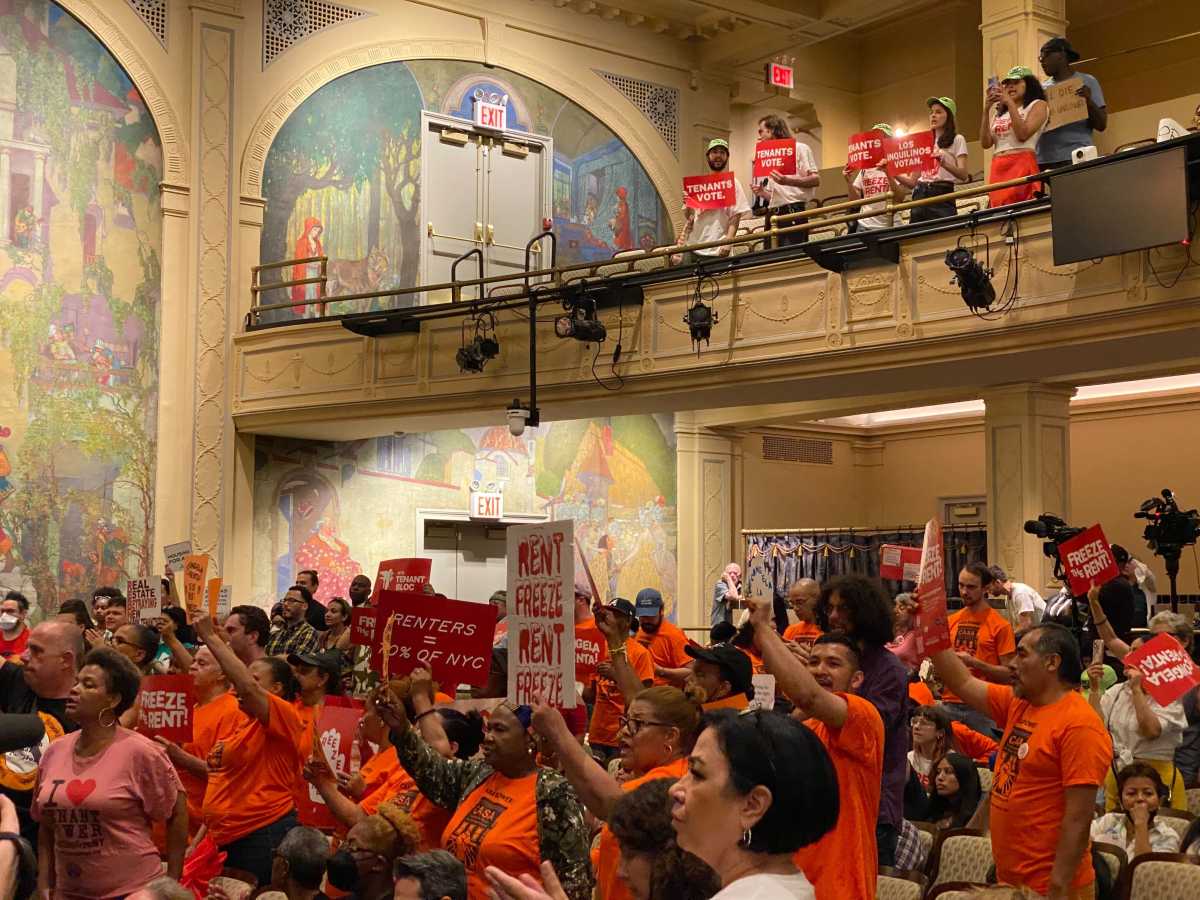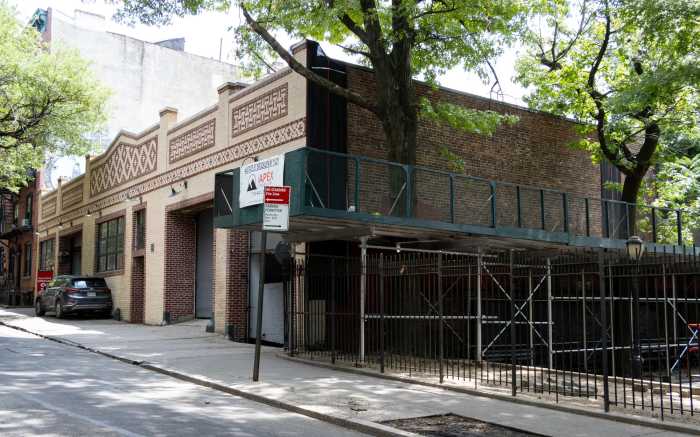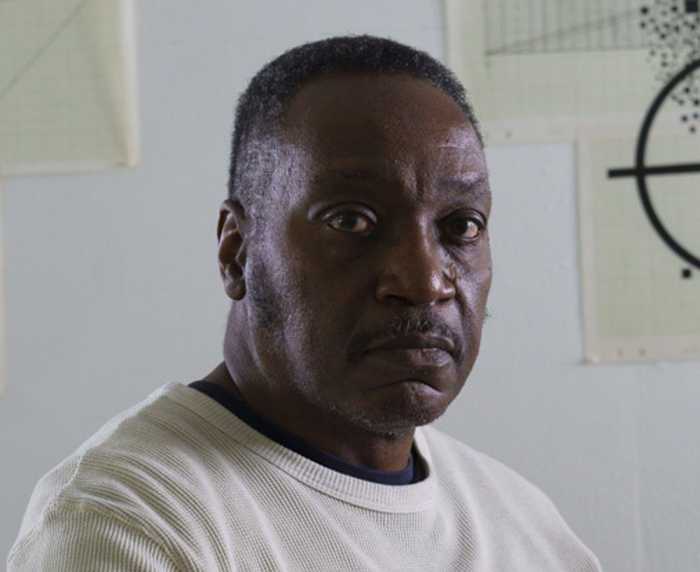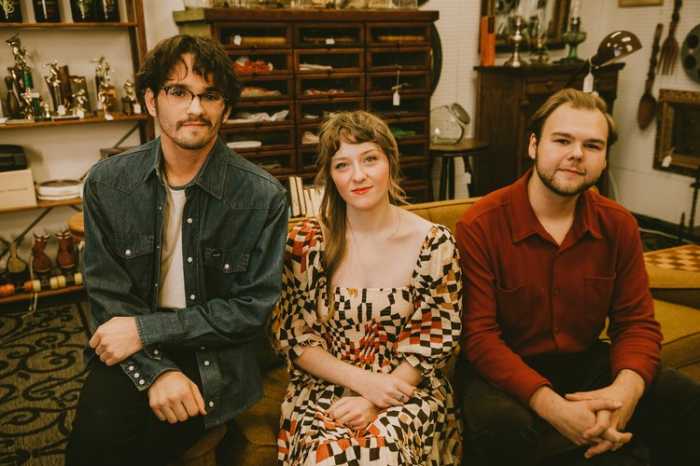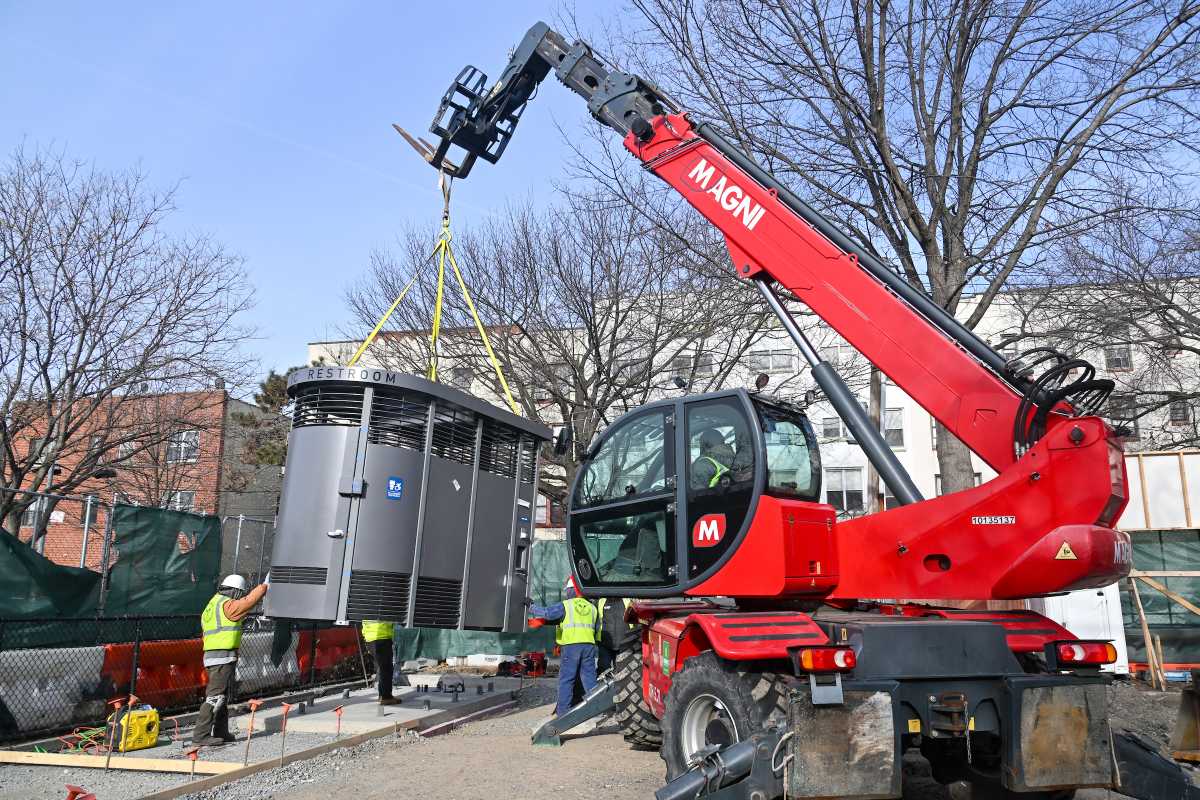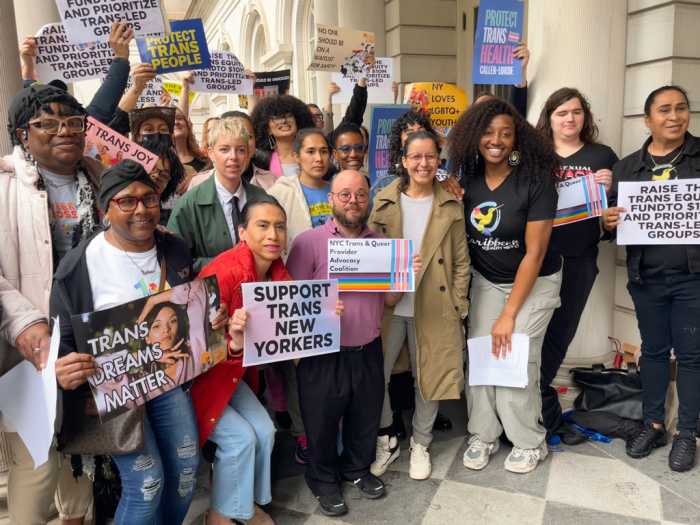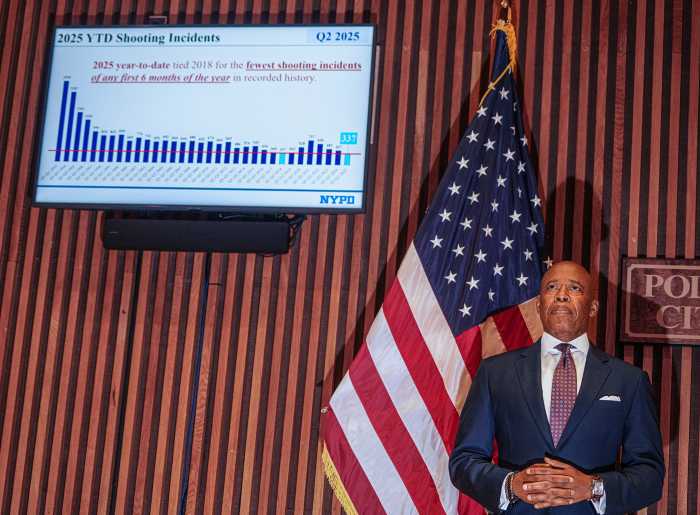In response to pressure from community members, politicians and the press,
community boards 2, 6 and 8 publicly announced their involvement in negotiations
for a community benefits agreement with developer Bruce Ratner over his
planned Atlantic Yards basketball arena, office tower and housing complex.
Those negotiations, held privately and without notification of the full
community boards, have carried on for the past 10 weeks.
All three of the boards fall within or neighbor the area that will be
directly affected by Ratner’s proposal, which in addition to creating
a home for his recently purchased New Jersey Nets basketball team includes
17 high- rise buildings including a 4,500-unit housing complex, and three
soaring office skyscrapers emanating from the intersection of Flatbush
and Atlantic avenues and stretching into Prospect Heights. At Wednesday’s
Community Board 2 meeting, board chairwoman Shirley McRae announced her
involvement — first reported in
The Brooklyn Papers — after handing itemized outlines of the
topics being negotiated in the closed-door sessions exclusively to committee
members who sit in advisory roles on the board.
“By now everyone knows that the community board members from boards
2, 6, and 8 have been meeting with other community members and Forest
City Ratner,” said McRae at the monthly meeting held at the Alliance
of Resident Theaters (ART/NY) at 138 South Oxford St. in Fort Greene.
The community room on the second floor of the old building was filled
with residents, and several stood at the back of the room or sat on the
floor. Those who had copies of the double-sided, one-page draft agreement
outline inspected it carefully; those who did not get a copy looked on
with someone else.
“There were some pointed accusations of the proposed task force for
this CBA — in some of the local papers,” McRae said.
“This community board is bound by City Charter to work on the behalf
of this community,” she said, and read directly from the charter.
“I’m trying not to be emotional, because I’m hearing some
stuff about the committee who are supposedly sitting around this board,
and it’s hard not to get upset,” McRae said.
“It was not our plan all along to bring this to our constituents
except when we had something that we could show,” said McRae.
One longstanding CB2 member, Ed Carter, expressed dismay that the issue
had not been announced to the board earlier in the process, but said he
was glad they finally did. “I want [the board] to bring something
comprehensive to Mr. Ratner, and any of the developers from now on,”
he said.
“We’re doing this so both community board members and non-community
board people with have an opportunity to have input to this discussion,”
McRae said, adding that after committee members reviewed it with their
neighbors they would bring back ideas to be incorporated at the next monthly
meeting, scheduled for Nov. 10.
Ratner officials have estimated a completion date for the community benefits
agreement of Nov. 1. But while McRae pointed out some of the bulleted
topics listed on the draft CBA outline, people asked around for any extra
copies.
Among them was City Councilwoman Letitia James.
An ardent Atlantic Yards opponent who represents Prospect Heights, Fort
Greene and Clinton Hill, James was one of the people left without the
first publicly released draft of the community benefits agreement for
the Atlantic Yards project.
James had to photocopy one of the Land Use committee member’s sheets
in the downstairs offices of ART/NY.
The crude outline divided agreements into five categories: Housing, Job
Development, Small Business Development, Community Facilities and Oversight.
Among those, some were more detailed than others.
The housing section listed commitments by Ratner to provide approximately
2,000 affordable units, in banded tiers. “30 percent will be affordable”
and “20 percent will be low income” detailed the descriptions.
Senior housing was committed at 10 percent of the total units. “Affordable
condos” was also listed, and a “community priority list,”
to give local residents priority in the new housing based on their ZIP
codes.
For jobs, the outline emphasized a project labor agreement negotiated
with trade unions assuring that for every four journeymen hired a trainee
position would also be hired, and priority for that hiring would be given
based on ZIP code.
“Forest City Ratner agrees to ensure at least 35 percent minority
and women on the project,” the draft reads.
Other bulleted items without detail were listed as ‘Job Training
— Construction’ and ‘Job Training — Commercial Tenants.’
The most detailed part of the agreement was for “Small Business Development.”
As part of a minority and women business enterprises initiative, contractors
are committed to include 20 percent minority-owned and 10 percent women-owned
businesses on the project, the document states.
The draft also commits to working with the Brooklyn Chamber of Commerce
and local merchant associations to “ensure that local businesses
are given priority when it comes to providing services and goods to the
project.”
The document further calls for Forest City Ratner to work with local lending
institutions to develop financing packages for local small businesses
and merchants to ensure they have “the financial capability to benefit
from the project,” and states that there will be a program in place
to encourage the hiring of minorities and women.
Craig Hammerman, district manager of Community Board 6, said that all
community board members in his district received copies of the CBA drafts
at their monthly meeting held at St. Peter/St. Paul Church at 190 Court
St., also on Wednesday.
“We asked our board members to review the outline and get back to
us with their comments by the end of the month,” he said.
He emphasized that the board chairs’ negotiations with Ratner did
not conflict with a statement released last month by all three community
boards urging Gov. George Pataki and Mayor Michael Bloomberg to require
the project be reviewed under the city’s Uniform Land Use Review
Procedure (ULURP), rather than the less-stringent state review process.
“If there’s a process going on, the community board should play
an advisory role, or the process will continue and we will have lost any
opportunity to weigh in,” Hammerman said.
He added that the ULURP requests had gone unanswered by both the mayor
and governor.
James, who said she had wanted to stay at the CB2 meeting for the open
comment portion finally left after waiting for two hours.
“Where’s the ULURP? Where is the term legally binding? Where
is the monitoring mechanism?” she asked rhetorically referring to
the draft CBA.
Gesturing to the outline in her hand, she said, “all of the language
in here is not acceptable to me. This draft of the CBA is nothing more
than a draft, and again, I recite my position that this project is not
a done deal.”


